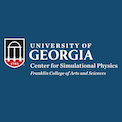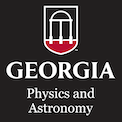Events Calendar View
-
Departmental Colloquium
Apr 6, 2017
Cusp Catastrophes and Neural Computing
The literature on information processing in neural systems is dominated by a focus on learning. Recent results have shown amazing computational abilities, in many cases with superhuman performance. Computers have been able to learn to play Atari games and Go better than we can. These successes have been based on so-called deep networks, caricatures of real, spiking neuronal networks. The work that I will present will focus on a different, but important topic in neural information processing: how the brain dynamically routes information from process to process. This ability may be seen in our ability to rapidly switch between different lines of thought. Line attractors in neural networks have been suggested to be the basis of many brain functions involving the propagation of spiking rate amplitudes, such as working memory, oculomotor control, head direction, locomotion, and sensory processing. I will discuss how, by incorporating pulse gating into feedforward neuronal networks, the propagation of information may be controlled and dynamically routed. I will show that spiking rate amplitude transmission in pulse-gated networks is associated with the existence of a cusp catastrophe, and that the slow (ghost) dynamics near the fold of the cusp underlies the robustness of an approximate line attractor that enables faithful amplitude propagation. Finally, I will demonstrate how pulse gating in combination with Hebbian learning can be used to construct predictive neural circuits and how such circuits generate oscillations with a characteristic frequency spectrum. -
Observatory Open House
Apr 7, 2017
Observatory Viewing
We will be having another public viewing on April 7, 2017. Because of the limited space in the dome, you must have a reservation to come to this showing. Click here to make a reservation.
The observatory is located at the top of the Physics building. To get to the observatory take the elevator to the 4th floor. A guide will meet you on the 4th floor and direct your group to the stairway that leads to the observatory. As the weather can be unpredictable, we might not know whether a viewing will be possible until shortly before the event begins.
If you need more information please call 706-542-2485.
-
CSP Lunch Seminar
Apr 11, 2017
Rovibrational Molecular Analysis in UV-irradiated Environments

Guest: Ziwei Zhang, Center for Simulational Physics, University of Georgia
Tuesday, April 11, 2017 12:30 pm - 1:30 pm
Location: CSP Conference Room (322) -
CSP Lunch Seminar
Apr 18, 2017
Magnetic Textures in Thin Films from RKKY Interaction. A Monte Carlo Simulation.
-
CSP Lunch Seminar
Apr 25, 2017
Monte Carlo algorithms for simulating oscillatory biochemical networks
-
Departmental Colloquium
Apr 27, 2017
Cusp Catastrophes and Neural Computing
The literature on information processing in neural systems is dominated by a focus on learning. Recent results have shown amazing computational abilities, in many cases with superhuman performance. Computers have been able to learn to play Atari games and Go better than we can. These successes have been based on so-called deep networks, caricatures of real, spiking neuronal networks. The work that I will present will focus on a different, but important topic in neural information processing: how the brain dynamically routes information from process to process. This ability may be seen in our ability to rapidly switch between different lines of thought. Line attractors in neural networks have been suggested to be the basis of many brain functions involving the propagation of spiking rate amplitudes, such as working memory, oculomotor control, head direction, locomotion, and sensory processing. I will discuss how, by incorporating pulse gating into feedforward neuronal networks, the propagation of information may be controlled and dynamically routed. I will show that spiking rate amplitude transmission in pulse-gated networks is associated with the existence of a cusp catastrophe, and that the slow (ghost) dynamics near the fold of the cusp underlies the robustness of an approximate line attractor that enables faithful amplitude propagation. Finally, I will demonstrate how pulse gating in combination with Hebbian learning can be used to construct predictive neural circuits and how such circuits generate oscillations with a characteristic frequency spectrum.
Page 73 of 121, showing 6 records out of 723 total, starting on record 433, ending on 438


